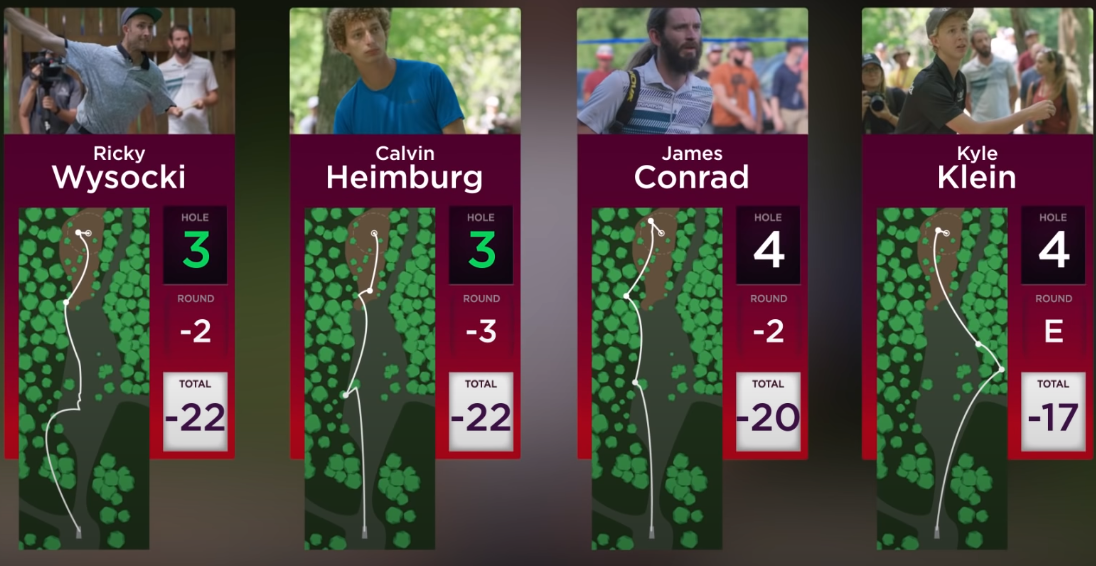Interesting event. The tournament style format was definitely different. Not sure this is the best course for it. If a player starts out a little off, not much of a chance to recover and get back in the groove.
it is an interesting course. Like someone said, kind of heavily dependent on the 400' laser shot. Calvin's unwinding after an amazing -10 round is very telling about just how tough this course is and the other side of the coin for KJUSA and his consistency under pressure.
The course only gives an inch, try to take a mile and bogey+ is in your future. There are a few ace run opportunities (though highly unlikely), but a player needs to be super consistent for 18 holes to score well.
Im not sure the commentary was completely accurate. As the actual designer of 3s new pad, 9 and 14 including the actual person that placed the tee on 13, pin on 7, 12, 15 and suggested the ladies tee on 18. I can make some comments.
3 - Tee placement was supposed to be straight back but parks wouldn't allow 2 mature trees to be eliminated. The back left spot was more open and added a little length to the existing shot. The green on three is cleared much further left. No one took advantage of that area which would have eliminated the need for extreme anny shots
9 - This shot is straight at the beginning however players could hyzer left and be inside the circle long and left.
13 - Never was and never is a sidearm hole. As you saw from the coverage almost no shot flared way left. You saw most sidearms fail. A tree by last years short basket forces you to hyzer early. At that point the ground raises up, so back hands hit that hill lose all their speed and skip down inside the circle. Anything that would have flared through the green gets gobbled up 50ft short by the big tree. Sidearms lose their glide and end up right or short. It is extremely hard to stop a sidearm on the back side of the hill before the basket.
14 - This shot was never meant to be a long late turn over. KJ's park job was a pretty wide swinging sidearm. The idea of this hole was to trick players into thinking they need to go right when a straight or slightly fading hyzer would bring you to the back of the green, clear, inside the circle. Calvins shot in the Semi's was a perfect example of how the hole was supposed to be played. KJ's in the finals is a perfect example of the hardest but most risky play.
15 - moved it back last year because Stan McDaniel had cleared the land 10+ years ago and there were basically no trees.
18 - I suggested to add drama to the ladies field, 18 did not have separation last year. I think that hole succeeded. Any player in the field could birdie 18.
Ultimately, the idea was to place the fear of the back 9 into the players so they pushed hard on the front. Ultimately, as it played out perfectly, players were aggressive and succeeded or failed on the front. There were come backs on the back. In other formats players would have obliterated the front. With the pressure of ESPN, payout, and difficulty of the back we got to see these players are human on a relatively easy front 10 holes.

